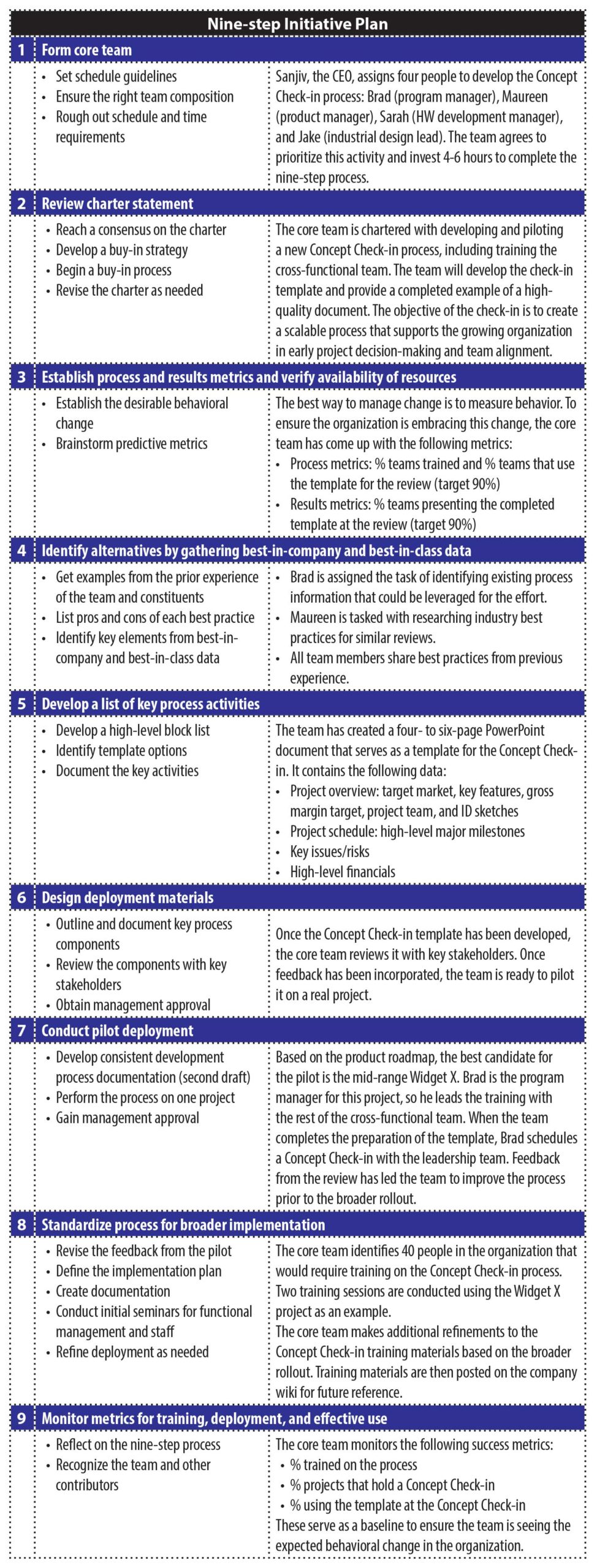What’s New?
New programs spin up every day, but most teams get off to a bad start. In a rush to get going, they forego a few simple steps that would help position their programs for success. What’s new is a simple nine-step process that will ensure that teams quickly establish a firm foundation from which they can successfully execute their programs.
What Is the Tool?
Nine-Step Process for jump starting teams
Successful programs require that teams are aligned, have a common vision of success, and know how success will be measured. This nine-step process can be used to accelerate the desired outcomes by aligning teams, piloting new processes prior to broader implementation and creating a set of metrics by which to measure success.
The Nine-Step Process:
- Form core team
- Review charter statement
- Establish process and results metrics and verify availability of resources to reach targets
- Identify alternatives by gathering best-in-company and best-in-class data
- Develop a list of key process activities
- Design deployment materials
- Conduct pilot deployment
- Standardize process for broader implementation
- Monitor metrics for training, deployment, and effective use
Each project should have a sponsor or team lead who can select the right people, charter the team, provide a clear definition of success, and time-bound the effort (when the project needs to be completed and how much time team members should budget). This structure can be used as a guideline and customized based on the needs of the project (e.g. you may choose to use only seven of the steps). The best approach is to create the “bones” of the process and then modify it as needed.
Completing the nine-step process can take two to three one-hour meetings. It’s important to time-bound this effort to ensure that you realize the gains.
What Are the Benefits?
- New initiatives get off to a solid start by gaining clarity on objectives.
- Programs can be accelerated by piloting new processes prior to broader implementation.
- Clear success criteria are established to drive tradeoffs and measure progress throughout the program.
- “Restarts” caused by unclear requirements are minimized.
Case Study
A mid-sized consumer electronics company is expanding its product line and has ramped up hiring to ensure they can execute their business plan. With many new people in the company and parallel development projects, the leadership team wants to implement an early product review process. Their objective is to ensure that teams get off to the best possible start to achieve their market introduction and revenue goals. The CEO has asked a small team of people to create the process and be responsible for rolling it out through the organization. The goal is to create consistency across the teams so that the process can best support early project decision making and team alignment. The core team will use the nine-step process to architect the product review process and will use the product roadmap to identify the pilot for the process before it’s rolled out through the company.

